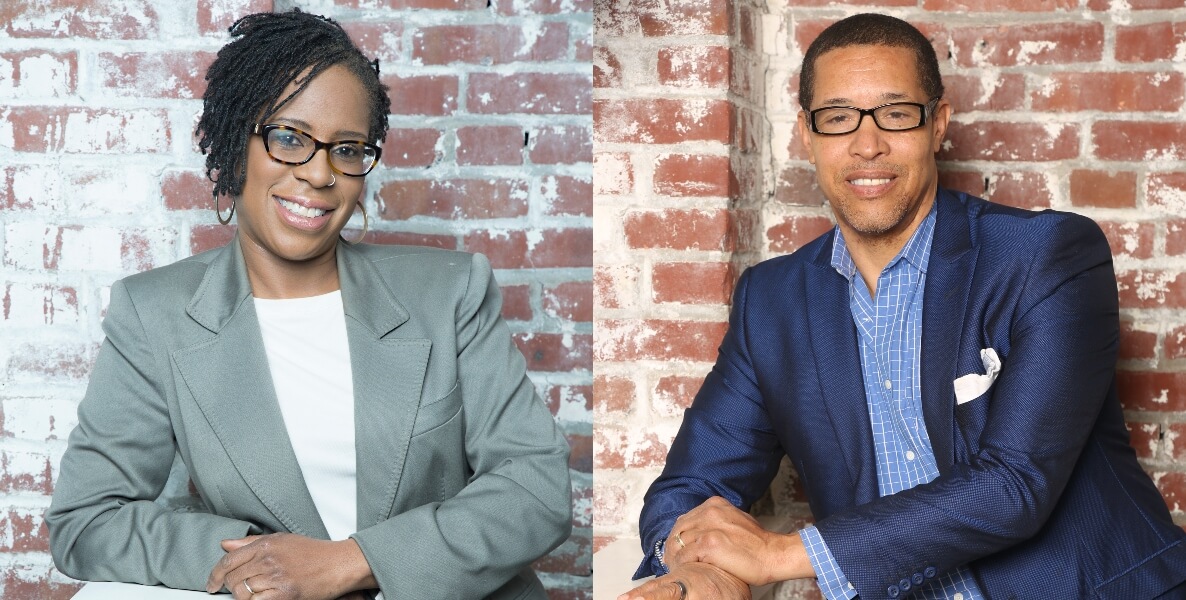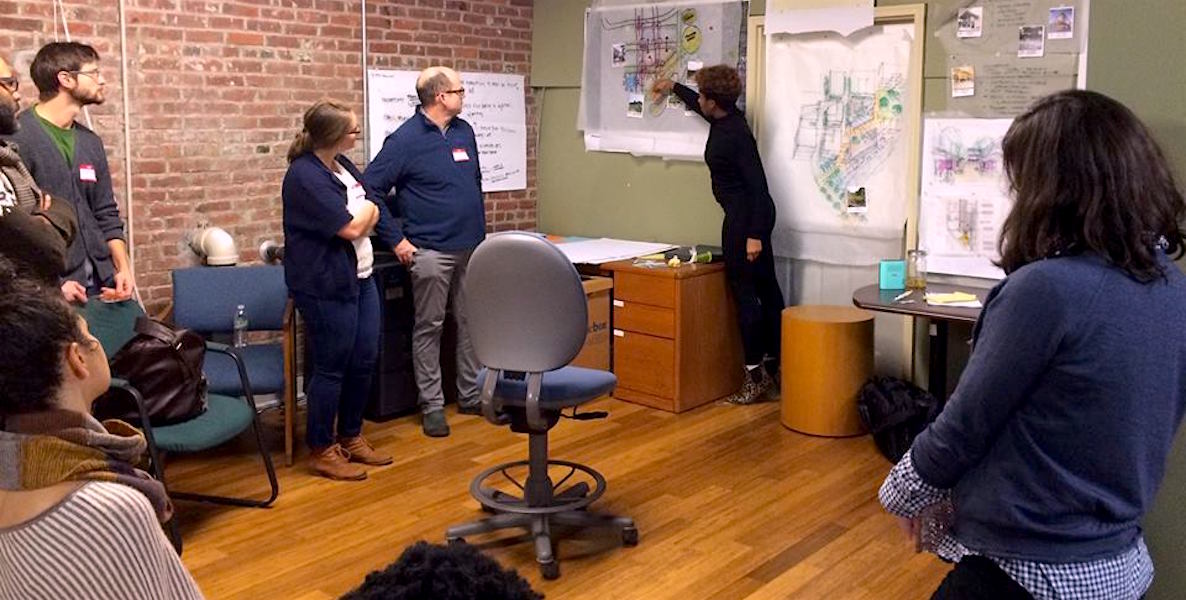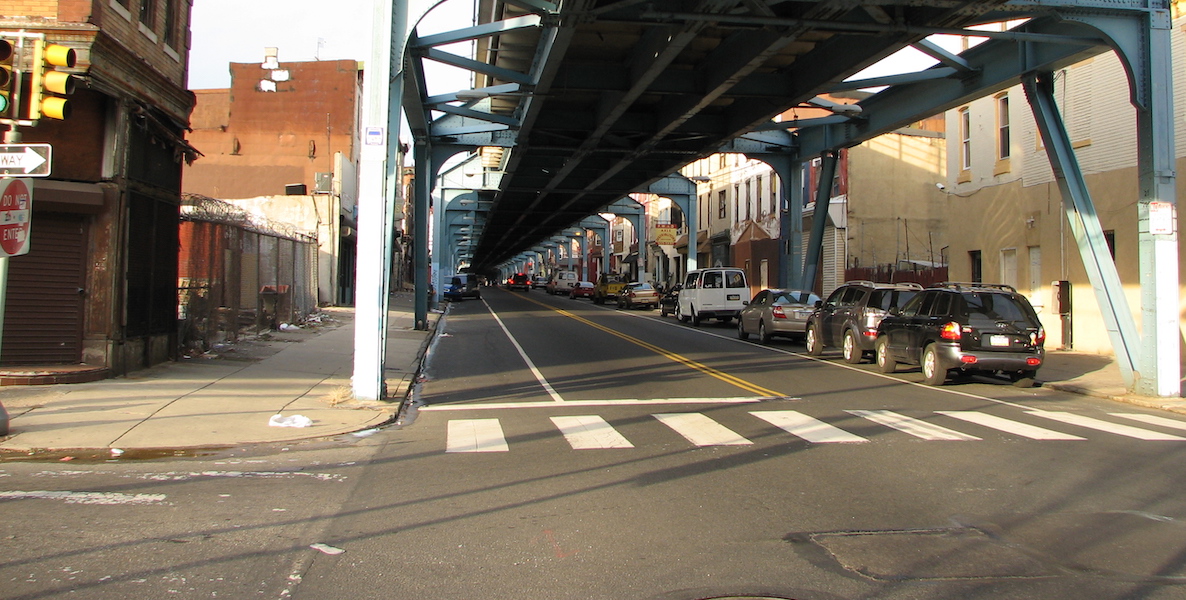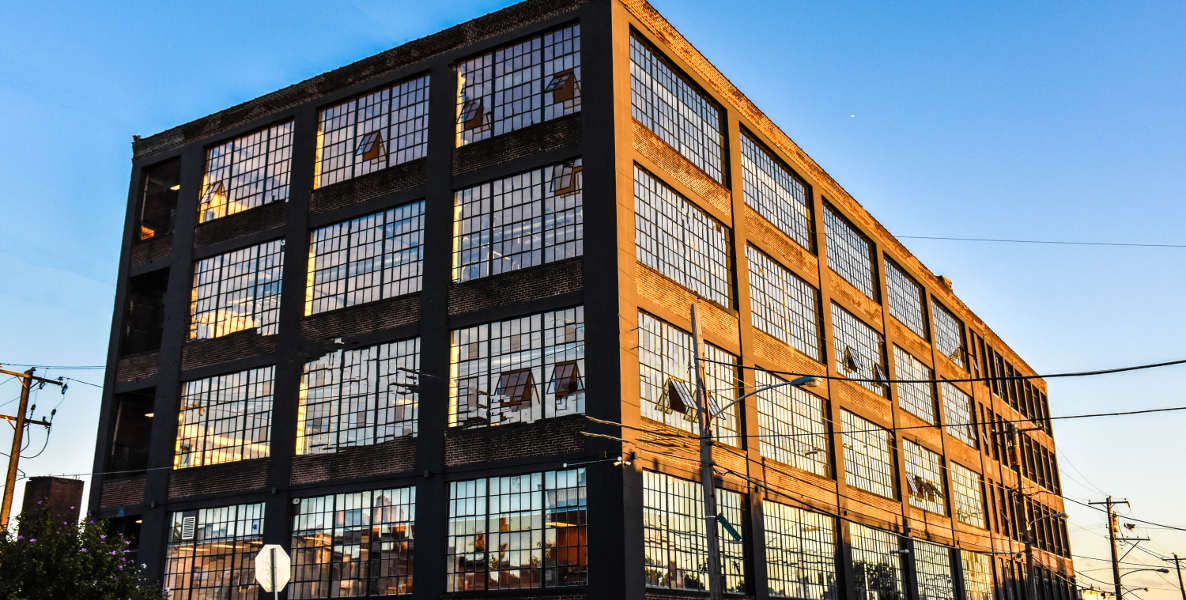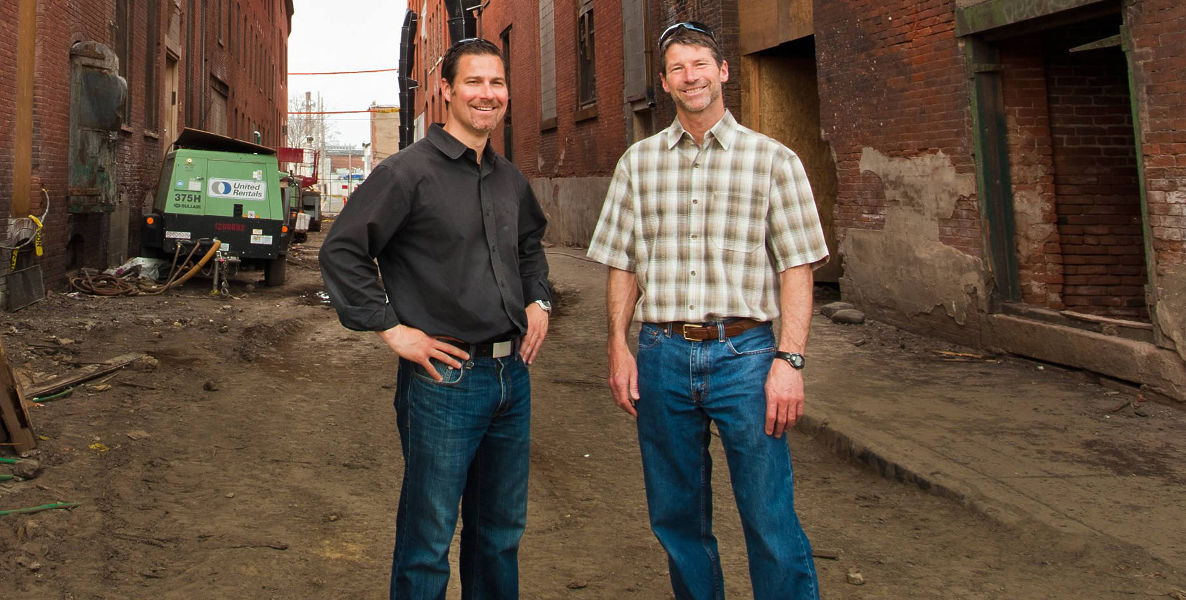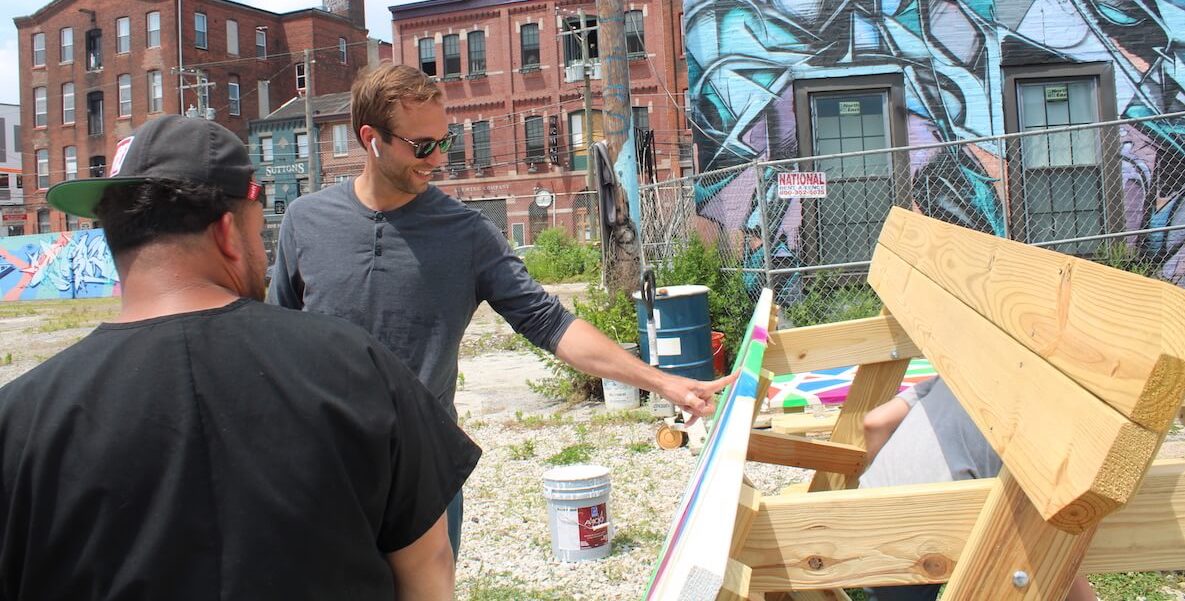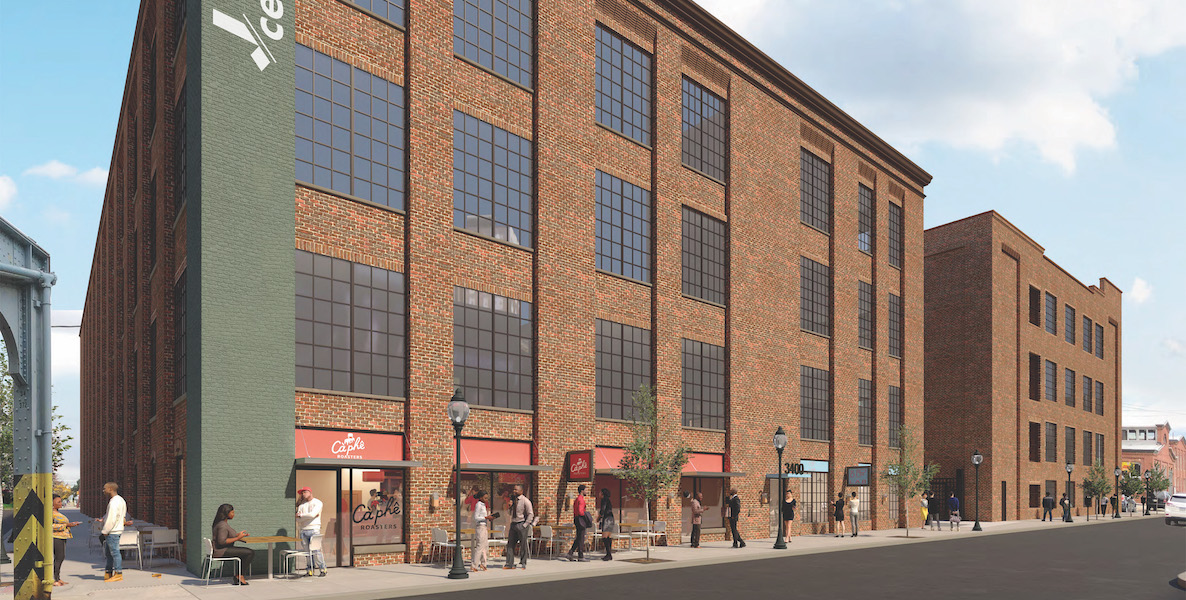A walk down Berks Street, west from the Market-Frankford Line Berks stop, is a tour of empty lots and razed buildings. The sidewalk glitters with glass and debris from ongoing construction projects in the neighborhood. Nearly every block has a plot of rubble.
In the midst of this desertscape of development—part of which falls within the 19122 zip code that, according to a report by WHYY, saw one of the highest number of construction permits issued in 2019—sits a little triangle of a park called Sunflower Philly, a community-based nonprofit organization.
A bright mural featuring the Puerto Rican flag rises up from the hollowed out ground at the intersection of North 5th Street and Germantown Avenue, where walls are adorned with elaborate and detailed graffiti art and the painted flags of countries from around the world. In the center stands a simple wooden stage ready for use.
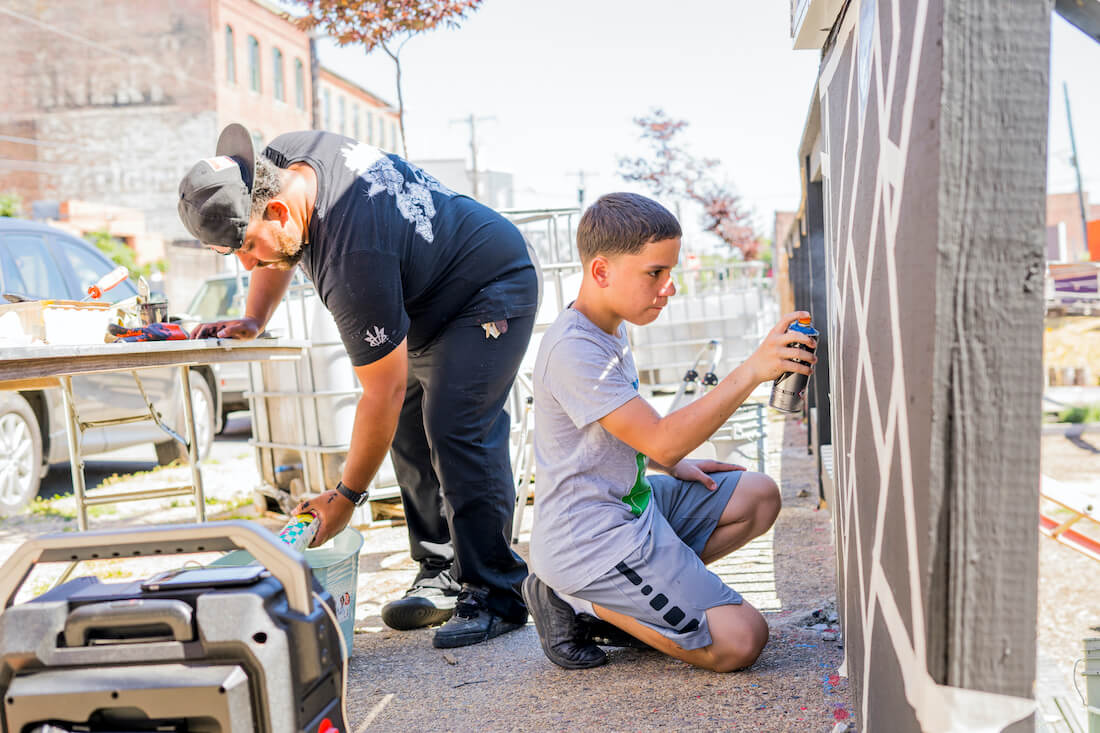
Though the colorful, carefully tended space serves as an oasis, a welcome contrast to the dusty hues of the surrounding construction sites, Sunflower Philly is not unconnected to the development that is reshaping the neighborhood north of Northern Liberties, referred to sometimes as Olde Kensington.
Visit the parkDo Something
The nonprofit organization Sunflower Philly was created in partnership with Flow Development and Technology, the company that owns and is developing the park land and another property on the same block.
Of the three, Rodriguez has the deepest roots in the neighborhood—he grew up a few streets away from the park at Mascher and Berks streets, where there is now a vacant, gravel lot which spans most of the block.
The art director at Sunflower Philly is all too aware of the toll that rapid development and gentrification can take on a community, and the complexities of addressing those changes while trying to bring old and new residents together.
“I do think you can do a lot of good with real estate development. I also think it’s really important to understand not just how it impacts a neighborhood right now, but how it’s going to impact a neighborhood long term,” O’Donnell says.
“Growing up in this neighborhood, at first you’re guarded. Being Latino in this neighborhood…you grew up with this sense of displacement already as you learn just from being pushed out of the original neighborhood. So you see things coming up and you kind of come up with this chip on your shoulder, from very young,” he says.
But Rodriguez says that as he got older, he realized that some changes can also present creative potential—a concept enshrined in his artist name, TAME, an acronym for “True Art Must Evolve.”
Now, Rodriguez has taken an active role in imagining the future of that community, and, quite literally, planting seeds for what comes next.
On a hot day in the middle of June, Rodriguez worked alongside his 12-year-old son, Brian “Beezy” Rodriguez, to paint the picnic tables that are scattered throughout the park. Since the pandemic started, he and the other members of Sunflower Philly, including Flow President Chadwick Smith, have been working to improve the space for public use and grow their audience.
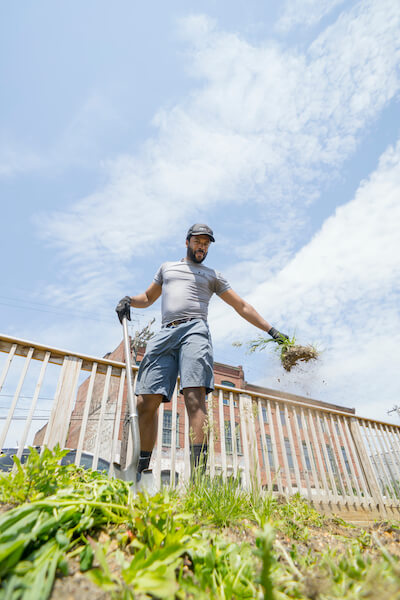
The weekend before, Rodriguez, Smith, and the rest of the Sunflower Philly team were joined by 40 to 45 volunteers throughout two days as they planted sunflowers and wildflowers on the hill at the far end of the park.
For Rodriguez, working with developers like Smith is an important piece to moving forward—and art plays a huge role in building that future.
“I feel like art, music are the things that connect us all…That’s the glue that kind of puts us all together,” Rodriguez says.
A new canvas
The genesis of Sunflower Philly was on “a random summer night” a few years ago, says Smith. Smith ran into Roth by chance—as Roth tells it, Smith was crossing the street with a six-pack of beer and the rapper asked him for one, then invited him to join the gathering at a fire pit alongside his house, where they started to talk about what a “community-focused project” in the neighborhood would look like.
Roth then brought in Rodriguez, whom he had known from various art events throughout the city, to talk to Smith about Flow’s development plans. It turned out that Flow had bought the property that included a wall of graffiti art first created in 1992, which Rodriguez himself had painted on years before.
After discussion, and bringing on board Melvin Powell, they came up with a plan: The excavated park space would become Sunflower Philly, and would serve to “rebuild the canvas that those walls were and give a space to the community,” as Smith puts it.
“We’re looking at real estate as a way to regenerate communities,” he added. “We want to be anchors for the neighborhoods.”
In order to do that, though, Flow, like any newcomer developer, faces an uphill battle. How can they build a bridge between longtime and new residents, and ensure their footprint on the community is sustainable in the long term?
“I genuinely feel like it’s my responsibility to kind of integrate all these neighborhoods, just because I’m Latino and I’m bilingual, I could help break that language barrier. So being involved with the space, for me, it’s everything,” Rodriguez says.
Though Flow has built other mixed-use apartment buildings in Northern Liberties, Olde Kensington, and Passyunk Square with a focus on environmentally sustainable practices and technology, Sunflower Philly is their boldest venture in integrating community engagement and impact into development.
“From the standpoint of the community investment and what we’re doing there, it’s a much higher level, where we’ve been able to bring together already existing community members, and that’s grown,” Smith says.
Flow’s plan is to offer the community two public spaces integrated into their private properties. In July, the company will start building a mixed-use apartment building on the other end of the block, where the original graffiti walls are, and plans to have an open, 10,000-square-foot courtyard space at the ground level that will be designated for public use as a part of that property. A stipend program, curated by Rodriguez, will be available for graffiti artists who want to paint on the walls.
women's art showcaseVideo
Sunflower Philly as a nonprofit organization will be involved in the integration and planning of all of those public spaces. Any revenue that the organization generates via ticketed music events will be funneled into a community action fund designated for neighborhood beautification and improvement projects.
For Roth, who first moved to the neighborhood in 2016, the focus is on ensuring community members continue to have a part in shaping and creating the park and the spaces that will be made available to the public. “We just want to make the space so cool, so important to the community that it can’t get taken away,” he says.
Different approaches to development
Smith, born in Baltimore, Maryland, and raised in West Chester, Pennsylvania, has lived in Philadelphia for the past 10 years, and considers the city his hometown. He hopes that Flow’s approach will be “a model that others can look at and see as an economically viable model.”
“There’s kind of a unique approach that we’re trying to follow with real estate development,” Elizabeth Smith, vice president of operations at Flow, said. “We just want to listen and be authentic to what’s been here for the past years, and what this future looks like and we want to make sure we’re staying true to what’s been here.”
Enshrining a local community gathering space is not, by itself, going to prevent the kind of displacement that residents in changing neighborhoods like Kensington fear from outside developers. It is but one small concession to forging a connection between new residents and older ones.
For Flow, the challenge is to avoid what Casey O’Donnell, president and CEO of Kensington social services agency Impact Services, calls a kind of “social impact washing”—akin to the concept of “greenwashing” to make a project or business appear eco-friendly—that can at times take place as developers use social impact projects to increase the value and profile of their properties, without guarantees for continued investment in the community.
“I do think you can do a lot of good with real estate development. I also think it’s really important to understand not just how it impacts a neighborhood right now, but how it’s going to impact a neighborhood long term,” O’Donnell says.
But the efforts of the Smith siblings (Flow is a family-owned company) speaks to a growing consciousness among developers of a need to be more responsive and sensitive to the communities where they build properties.
In Philadelphia alone, there are several impact developers in and around Kensington who are exploring ways to renovate and build new property in a neighborhood while offering something to longtime residents of the area.
Shift Capital has already established a presence in Kensington, most recently with its “Good Neighbor” program at its mutli-use facility, J Centrel, on J Street.
community-centered developmentRead More
In South Kensington, Greg Hill and Gabe Canuso of D3 Developers have built Oxford Mills, a residential and commercial center that offers discounted rents for teachers, as well as office space for education nonprofits.
From Philly to Providence, Rhode Island, to North Texas, this kind of “impact development” is popping up in cities across the country. In the most successful cases—like with Shift, a B Corporation—the work to be of the community, not just in the community, is baked in to their business model from the planning stages.
How do the locals feel about it?
So far, opinion in the neighborhood around Sunflower Philly is mixed. Tyrone Bey, who has spent time in the area for the past 20 to 30 years, was skeptical of the new project. He sees it as a neighborhood improvement project that is meant more for new residents moving to the area.
“Now they’re gonna utilize it, with the people who can afford to live here,” Bey said.
“We just want to make the space so cool, so important to the community that it can’t get taken away,” Roth says.
But others, like longtime resident Carlos Varona, applaud the changes. He says he has happily spent time in the park space since it’s been renovated by Sunflower Philly.
Chadwick Smith acknowledged that “it’s a balance,” and said that the group still has work to do to make sure community members understand that the park is open to the public.
He noted that at least 10 people came by on a weekend in early June when they were planting in the park, and that they had no idea that it was open for public use. Smith, Rodriguez, and the Sunflower Philly team are using social media and in-person interactions to engage more people—and it seems to be working.
At the second of their bi-weekly neighborhood trash cleanups. which Sunflower Philly launched on June 28, over 50 people joined to pick up trash in the blocks south of Sunflower Philly, in and around Hancock Park. The group that gathered on July 12 included new and longtime residents of the area, local business owners and some Philadelphians who don’t live in the immediate neighborhood but found out about the cleanup via Instagram.
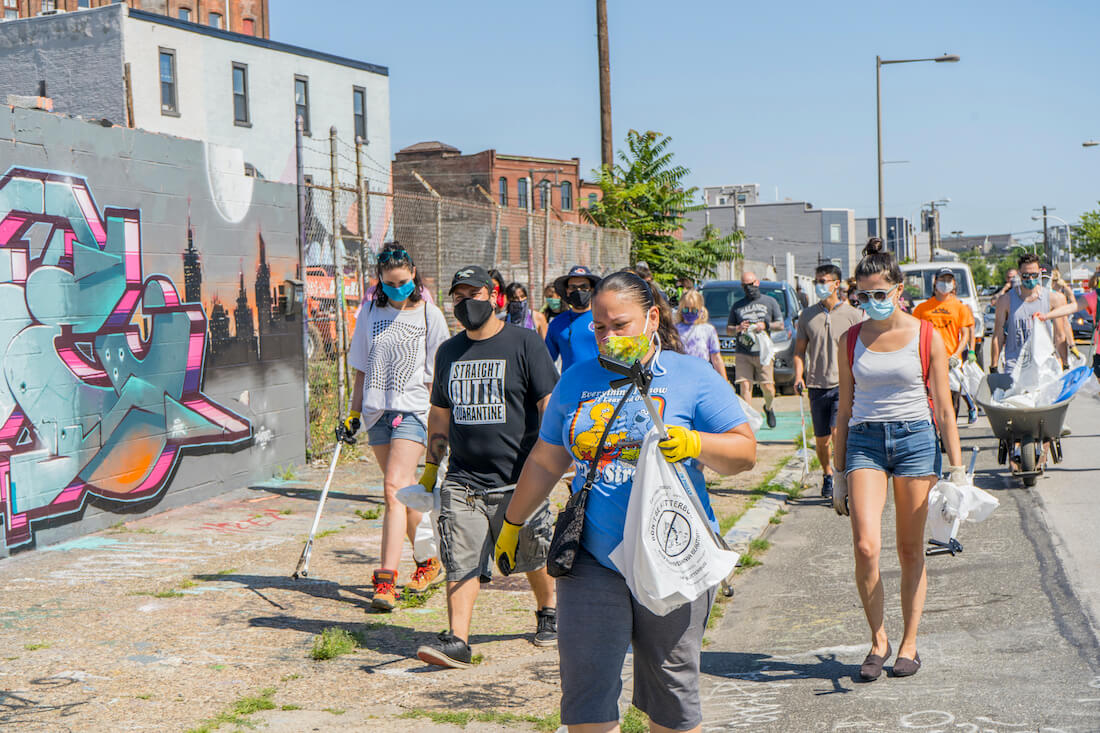
Arthur Lyons is a business partner at The Holodec, a virtual reality arcade on North 5th Street that had been slated to open in March but has postponed its official launch due to Covid-19 restrictions. He said he and his partner had been picking up trash every week outside of their business, so he was excited to see the group led by Sunflower Philly collecting litter several weeks ago.
“I was like, man, thank you guys so much, this is great…and then I met Chris, so just joined the effort from there,” Lyons said.
For Rodriguez, the success of the project, and the long-term benefits of Sunflower Philly, comes down to building relationships and making connections.
“I genuinely feel like it’s my responsibility to kind of integrate all these neighborhoods, just because I’m Latino and I’m bilingual, I could help break that language barrier. So being involved with the space, for me, it’s everything,” Rodriguez says.
Header photo: Christian Rodriguez (L) and developer Chadwick Smith look at a freshly painted picnic table at Sunflower Philly | Photo by Emily Neil


